Besiders
Reinterpreting Tradition, Stitch by Stitch
For the past three years, Marilyn B. Armand has devoted herself to the art of making sustainable quilts that will last a lifetime.
Text — Marie Charles Pelletier
Photos — Eliane Cadieux
The wood floors creak in a former knitting needle factory in Bedford, Québec, where several craftspeople have set up their workshops. Marilyn B. Armand designs modern quilts in her small, bright studio on the second floor, from which you can hear the river below.
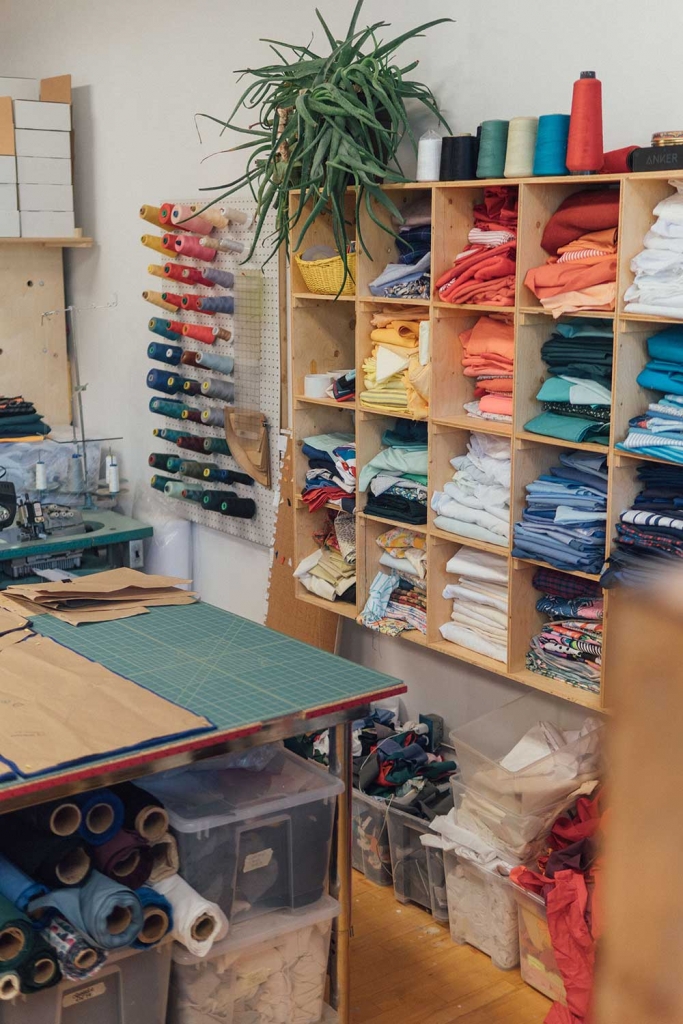
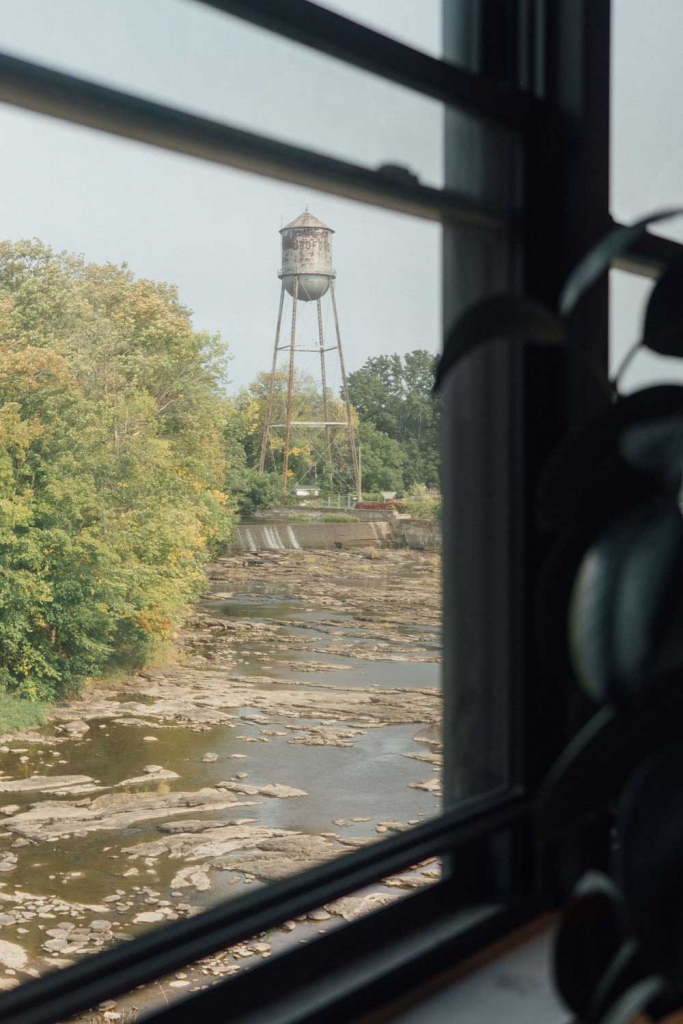
Like so many traditions, the art of quilting has largely been lost over time. The 33-year-old woman, who’s lived in the Montérégie countryside since 2018, has taken up this skill passed down through generations of grandmothers. But she’s not only carrying on the tradition—she’s also reinventing it.
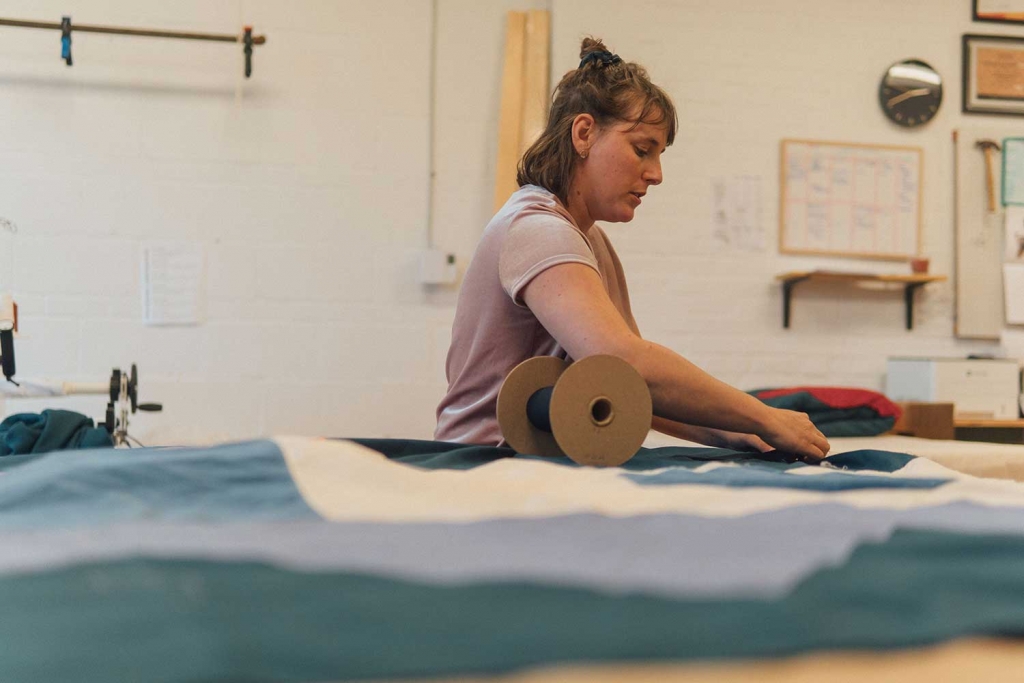
A little girl who loved to sew
____
Armand recounts the story of how she became a quilter, as spools of thread hanging from the walls cast colour through the room. “My grandmother was a seamstress, and I was raised by my aunts, who also sewed a lot. To keep me busy, they’d sit me down in front of their sewing machine,” she recalls, smiling.

She’d loved fabric and stitching since childhood, but hadn’t grown up with the art of quilting. When she finally came to it, Armand had been searching for her true medium for several years. She’d tried her hand at drawing, painting, and weaving, but none of them allowed her to bring to life what she had in mind. But when quilting occurred to her, she had a gut feeling it was right. Despite all her years behind a sewing machine, she couldn’t quilt by instinct: she had to learn. Members of her weaving class at the Cowansville Cercle de Fermières told her to “give France a call.” France Verrier, a former nurse and quilting specialist, would be able to help her out.
Two evenings per week, Armand went to the sexagenarian’s house, where Verrier taught her all that she knew. In 2018 Marilyn left her management job to become a full-time quilter and start her own business, Le Point Visible (the visible stitch).
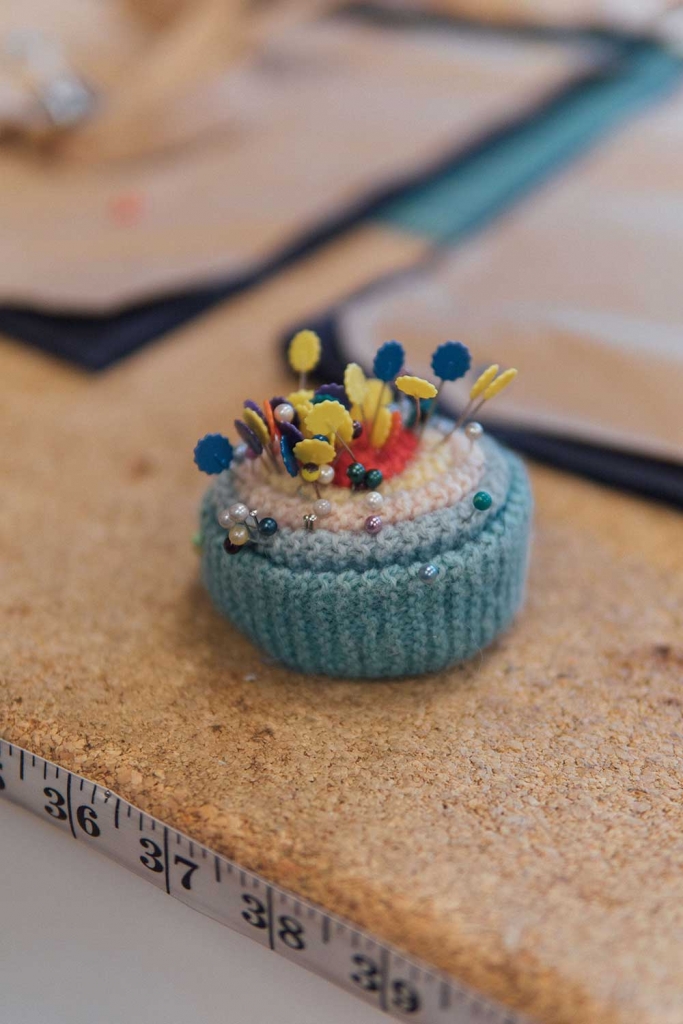

While Armand had a clear idea of what she wanted to do, her new mentor quickly brought her in line. “You’re going to start by learning the basics. After that, you can do whatever you like.”
Traditional stitching and patterns shaped her training—a prerequisite and rite of passage before she could begin working on her real goal: modern quilts. Armand explains her creative process, pointing out images in France Verrier’s book, which reigns supreme on her work table. Classic models—the log cabin, the circle, the mariner’s compass—are Cartesian: Armand is deconstructing them, modernizing them. Unlike those of traditional quilts, her patterns aren’t repeated in each square but span the whole quilt. She tends toward minimalist designs—which doesn’t make the process itself any simpler. The design work she does upstream may take hours; each quilt is meant to elicit emotion and transcend time.
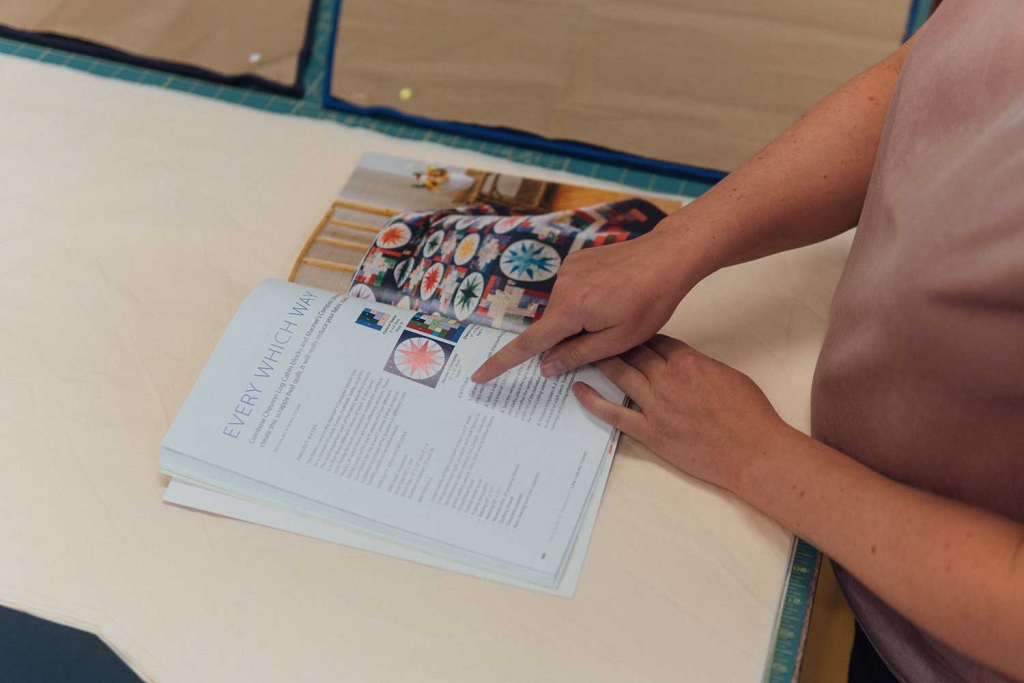
Forsaken fabrics
____
Textile manufacturing is one of the most polluting industries in the world. Le Point Visible is fighting to do its part: all the rolls of fabric piled up in Armand’s workshop are upcycled. Environmental responsibility is at the heart of traditional quilting and remains central to Armand’s modern approach.

“It’s my modus operandi: I collect fabrics that companies have rejected and would otherwise be thrown out,” she explains while showing us a thick cotton fabric that’s as blue as the sea.
It’s a brand-new, 45 m long roll, completely unusable according to the supplier. “It’s a superbly high-quality fabric, but it has some defects,” Armand explains, pointing. “There’s places where the colour slightly varies.” She jumps on opportunities like this, squeezing her way through cracks in the industry between large suppliers and private sellers.
“Other small-scale production companies often need a minimum of 10 m of fabric without any defects. I take everything. I cut fabrics to use as much of them as possible,” she explains. She uses the larger pieces for big quilt patterns, the smaller pieces for creating kits or—a sign of the times—face masks. Armand seeks out cotton, polycotton, linen, and wool, shunning synthetic materials. She also collects scraps from other Québec designers, including Atelier B and Marigold.
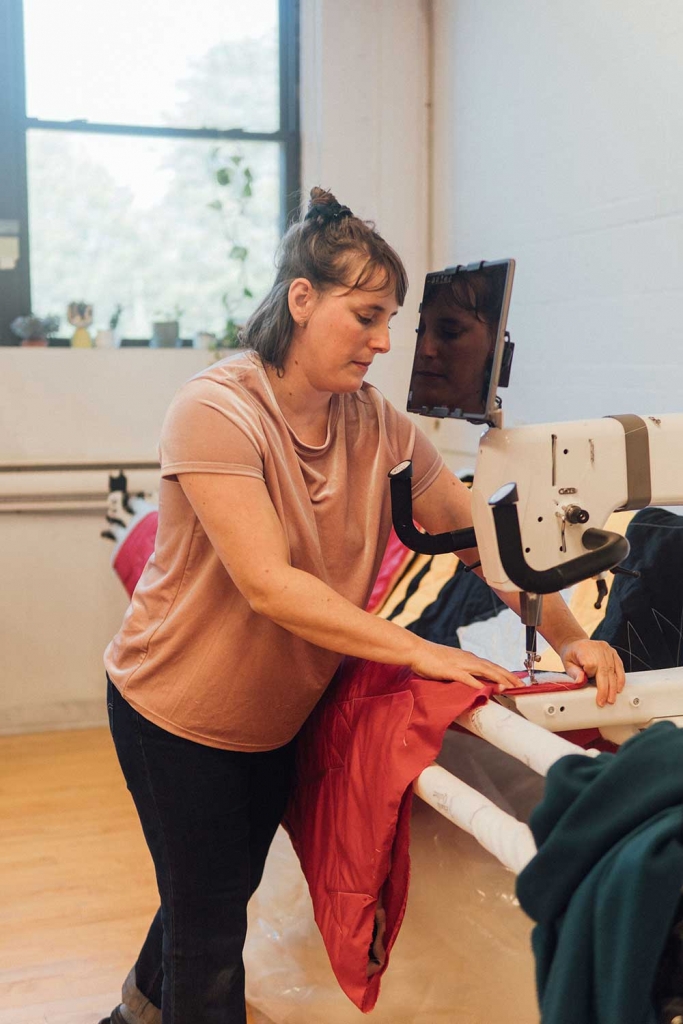

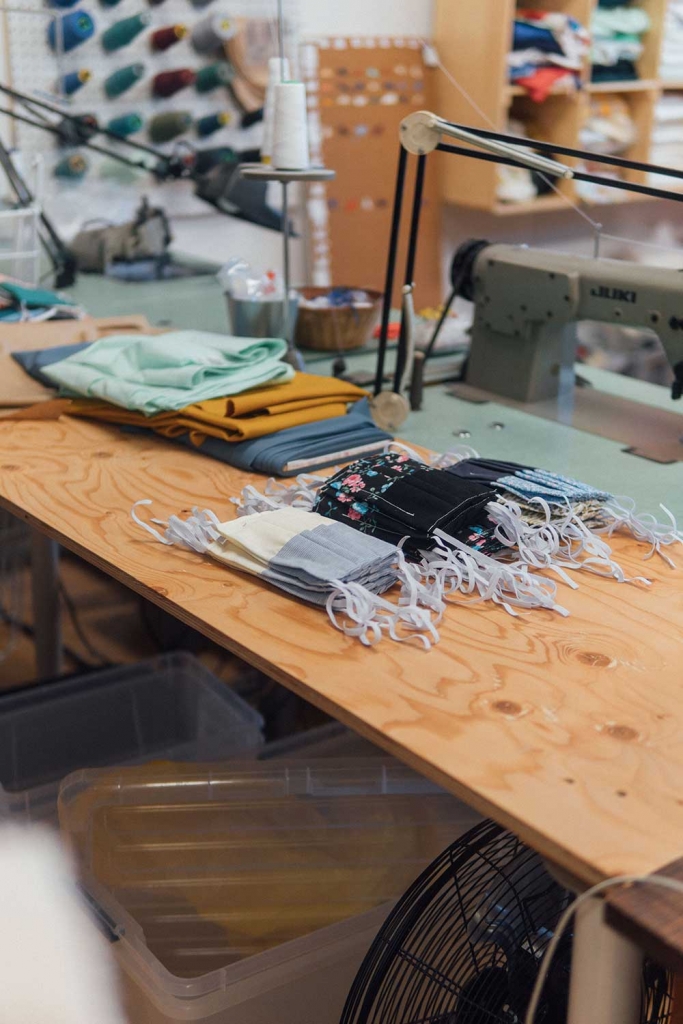
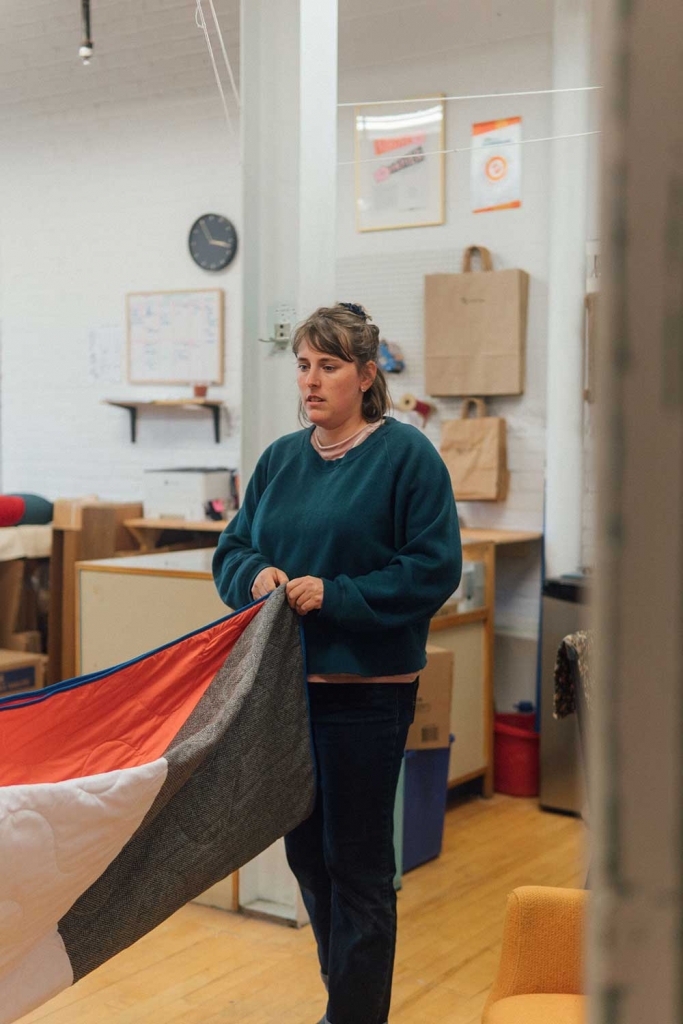
Blankets that live on
____
Quilting takes patience. “A single bedcover takes me about 25 hours to make,” Armand estimates, a little less if she’s working on several at once. Looking at the heavy blanket and knowing how many hours went into it changes your perception of time, as does the longevity of the object itself. Three layers—the top, batting, and backing—make quilts particularly strong and durable, and topstitching keeps everything in place.
It was knowledge transfer that gave birth to Le Point Visible, and Armand wants to carry on that tradition. When it’s safe to do so, she holds workshops and offers quilting kits to help others learn to make their own. “People often send me photos of their final product, and some of them even reinvent the pattern from their pieces of fabric,” she says, content in the knowledge that her teachings—as well as patience—can be passed on in a box.
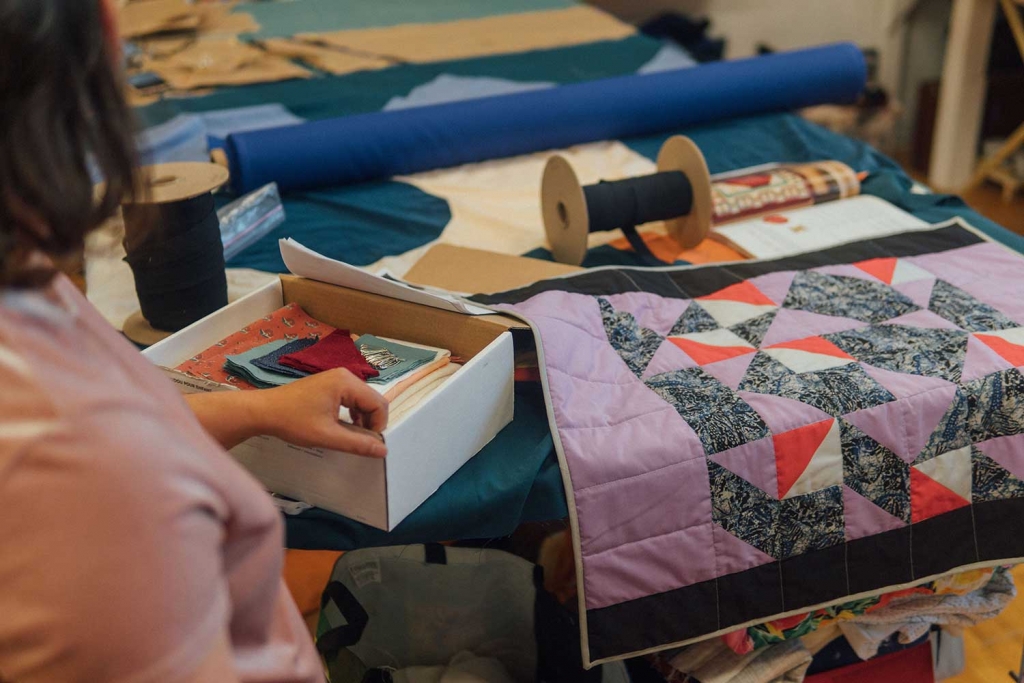
Quilts are among the things that grow more beautiful with time and memories. Therein lies their value: the hours spent creating them are reflected in their longevity.
Quilts like Armand’s will hold up over time; they’ll age along with us. They’ll keep us warm when we’re sick. And one day, perhaps, they’ll comfort our children too.

Never Miss Another Issue
Two issues per year
25% OFF previous issues
Free Shipping in Canada